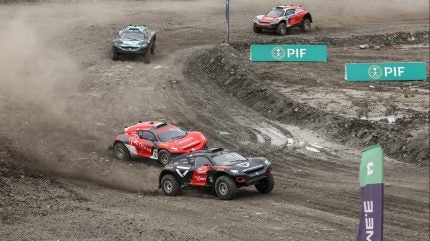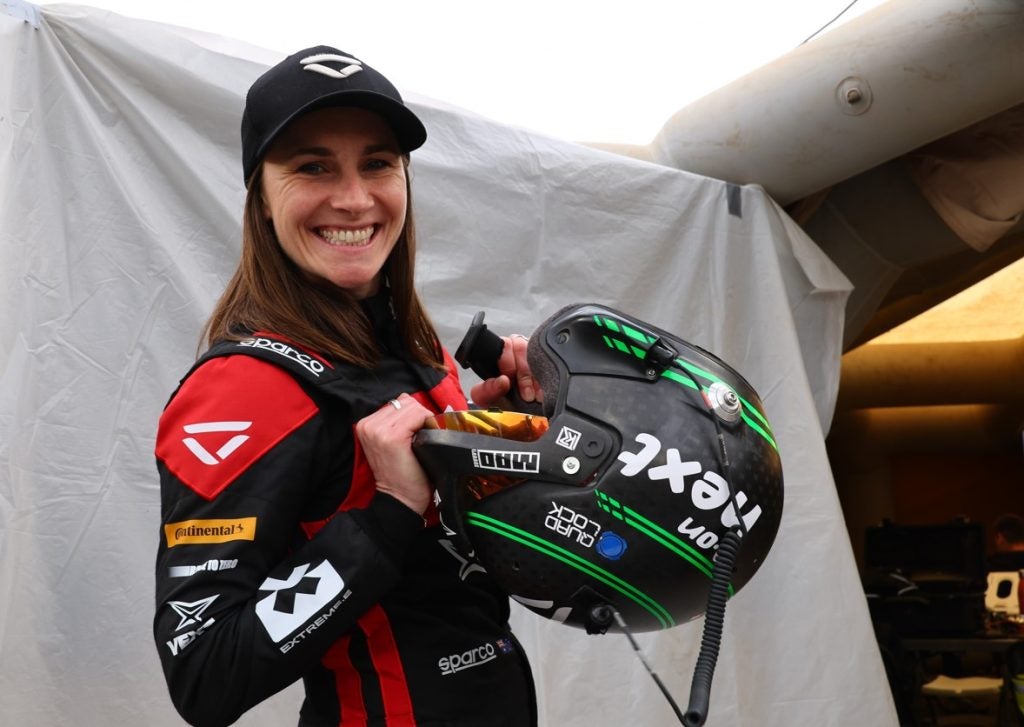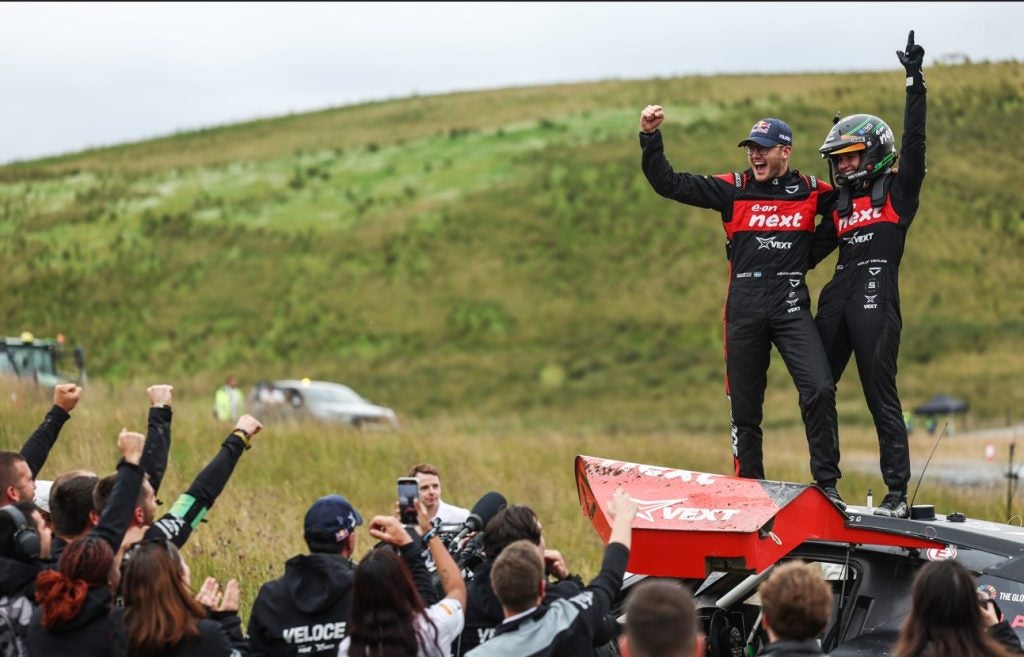
Extreme E, an FIA-sanctioned international off-road racing series that utilises silhouette electric SUVs to race in remote parts of the world, recently announced that its mixed-gender racing format is breaking boundaries in motorsport.
In just four seasons of Extreme E, on-track data has showcased that the gap in performance times between its male and female drivers has narrowed by almost 70%.
Frankie Youd spoke with Molly Taylor, E.ON Next Veloce Racing, Catie Munnings, Andretti Altawkilat Extreme E, to learn more about the importance of Extreme E for women.
Just Auto (JA): How has Extreme E helped you within the motorsport/racing industry?
Molly Taylor (MT): Extreme E has provided an incredible opportunity to compete at a peak level in international motorsport and be part of the future of motorsport and sustainable technology.

US Tariffs are shifting - will you react or anticipate?
Don’t let policy changes catch you off guard. Stay proactive with real-time data and expert analysis.
By GlobalDataHowever, it has also provided a unique and extremely valuable mentoring opportunity with some of the motorsport greats and unlocked access to further driving and development opportunities outside of Extreme E itself.
So, it hasn’t just been the chance to compete internationally, but in turn the access to other development opportunities and doors it has helped open in the process. It’s helped build momentum to make real progress.

As a female driver what would you like to see more of within the motorsport industry?
MT: Motorsport is hugely challenging for anyone to make it in, male or female, and I think that is important to acknowledge.
I think visibility is a key factor to encourage more young girls to get involved at a grass roots level and even up the natural participation. At a higher level, we now have data to show what is possible when investment is made in female drivers, from both a performance and commercial perspective, so I would like to see this acknowledged more broadly when we are looking at unlocking the investment required by any driver to make it.
At the end of the day, you have to do the job, so this isn’t just a marketing exercise but, on the side, it needs to be done in the right way.
Catie Munnings (CM): I’d love to see more entry-level style opportunities for women shootouts. I think the FIA is creating a few now within rally, which is great to really help nurture and show people that the opportunities are there. I remember when I first started working with Susie Wolff on her ‘Dare To Be Different’ campaign, before it became ‘Girls On Track’, it was really apparent when you’d speak to girls and you’d say: “Put your hand up if you want to be a racing car driver.” I actually had young girls say: “I don’t think you can. I didn’t think it was an option because when I watched a Formula One, there’s no females on the grid,” and that’s from five- year-old girls.

I think it’s really important to keep on improving that visibility. That’s everyone’s responsibility across the industry. I’d like to see more championships integrating the sport, the gender equality in a sporting way, because I think that’s when real change happens, that’s when that talent is really nurtured, and when it has an impact on the overall team result. That’s when it really starts to take shape. I’d like to see more of that across the board in creative formats.
I think Extreme E were really creative. It hadn’t been done before when they came in. Now opportunities for women to race against the men when they win these shootouts, or they win the female only championship, I think would be the way that I’d like to see things go. Rather than just a bit of a cash fund, I’d like to see an actual opportunity with proper testing, and a proper career plan laid out.
I know it’s expensive, but I think that’s what it takes to really make it to the top, because without testing, without seat time, you’re really limited on how far you can improve in motorsport compared to the other drivers that will be in that position.
Do you think the new data will come as a surprise to some?
MT: I think it’s no secret that seat time is the key to improve performance and with more resources you have more opportunities to get this seat time. So, it can become a tricky cycle to break. Given more access to seat time, I am not surprised by the outcome, as all along there is no physical reason for a male and female to not be able to compete equally in motorsport.
Stereotypes are hard to break.
I can appreciate however, that it still may come as a surprise to some; stereotypes are hard to break. But it feels nice to be part of a wider group working to do just that.
During your career as a female driver, have you seen changes in attitudes and opportunities towards females working within the motorsports space?
CM: I would say a championship like Extreme-E has provided so many opportunities for women that really weren’t there before. I think the sporting format and regulation of women being an integral part of the team has really changed how the opportunities have been presented to women in motorsport, because it’s been in the team’s interest to make the females as fast as the males.
I would say a championship like Extreme-E has provided so many opportunities for women that really weren’t there before.
Naturally, there weren’t as many females at the top of motorsport just because of participant numbers in the lower categories at the beginning. Now, once we’ve nurtured the talent that was there, I think it’s proven how an opportunity really does turn into results when nurtured in the right way.
As we all know, motorsport is an incredibly hard sport to practice and to break into because of the financial side of it. I would say since I started, there have been a lot more initiatives set up to encourage women into motorsport. But more importantly, I think the championships really have to provide opportunities and incentives for professional teams with the backing behind them to be able to support the girls in the same way that the top guys are competing.
How can platforms like Extreme-E help with breaking gender boundaries?
CM: I think the impact is bigger with a championship like Extreme E rather than segregating the male and female classes, because we’re in a sport where we can compete against the men. It’s not like single seater racing, where there’s also other physical factors in play. Our cars have power steering, we don’t have the same G forces that they have in single seaters. It’s one of the unique sports around the world where we can compete against the men and be competitive against the men.
I think Extreme E did an amazing job of recognising that very early on and providing the seats for women to really showcase that in head-to-head racing formats, where everybody’s on the start line when the flag drops, and then it’s a race against the other drivers, whether you’re male or female.
I think you can always talk about it, and you can always have media stunts of females in the team, but actually, Extreme E had the most powerful voice out of everyone in motorsport at the time by really providing that opportunity and then just letting the sport talk for itself, which I’m really proud to be a part of.
That sort of impact, rather than just having a token female in the team, was the integral part of Extreme E and that really made all the difference.




